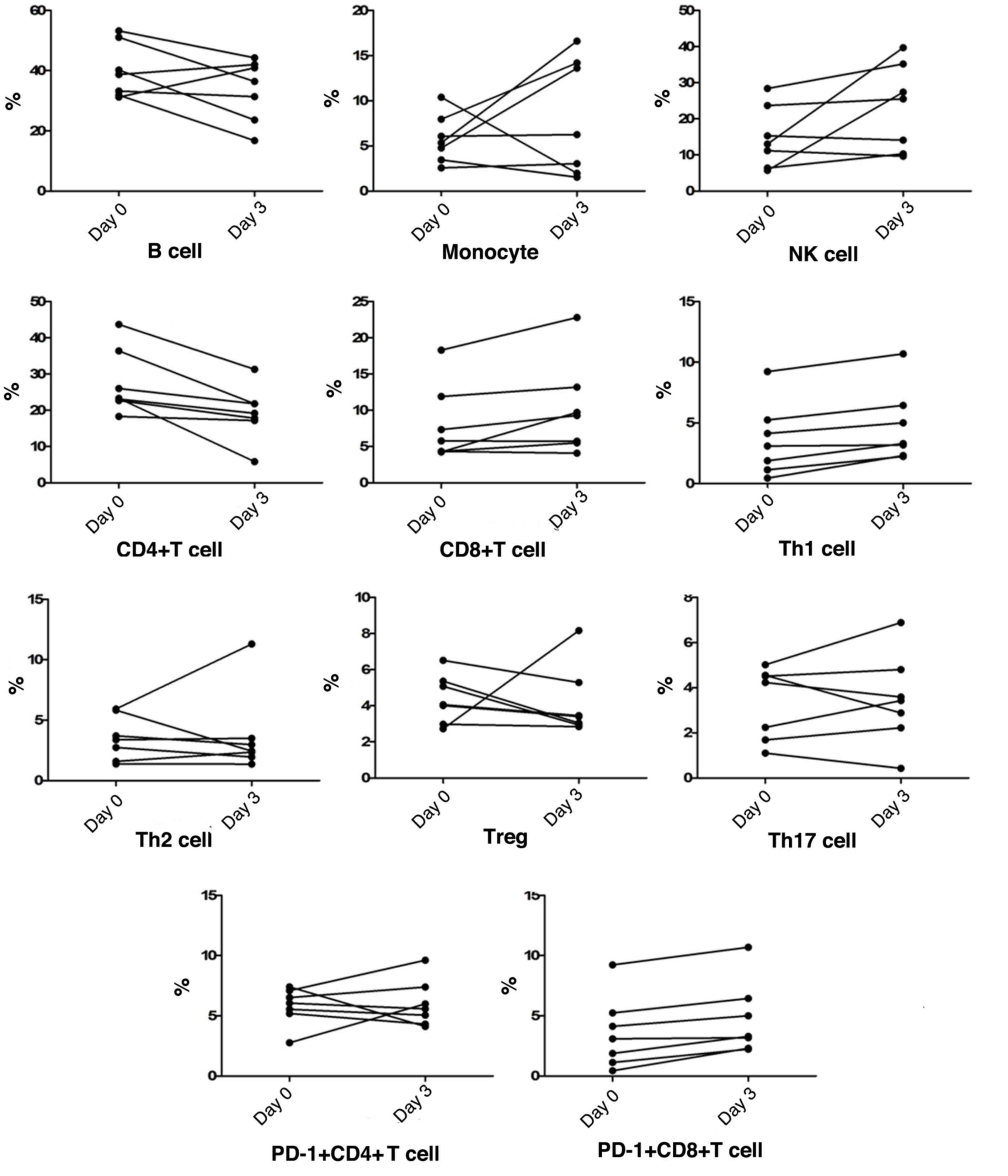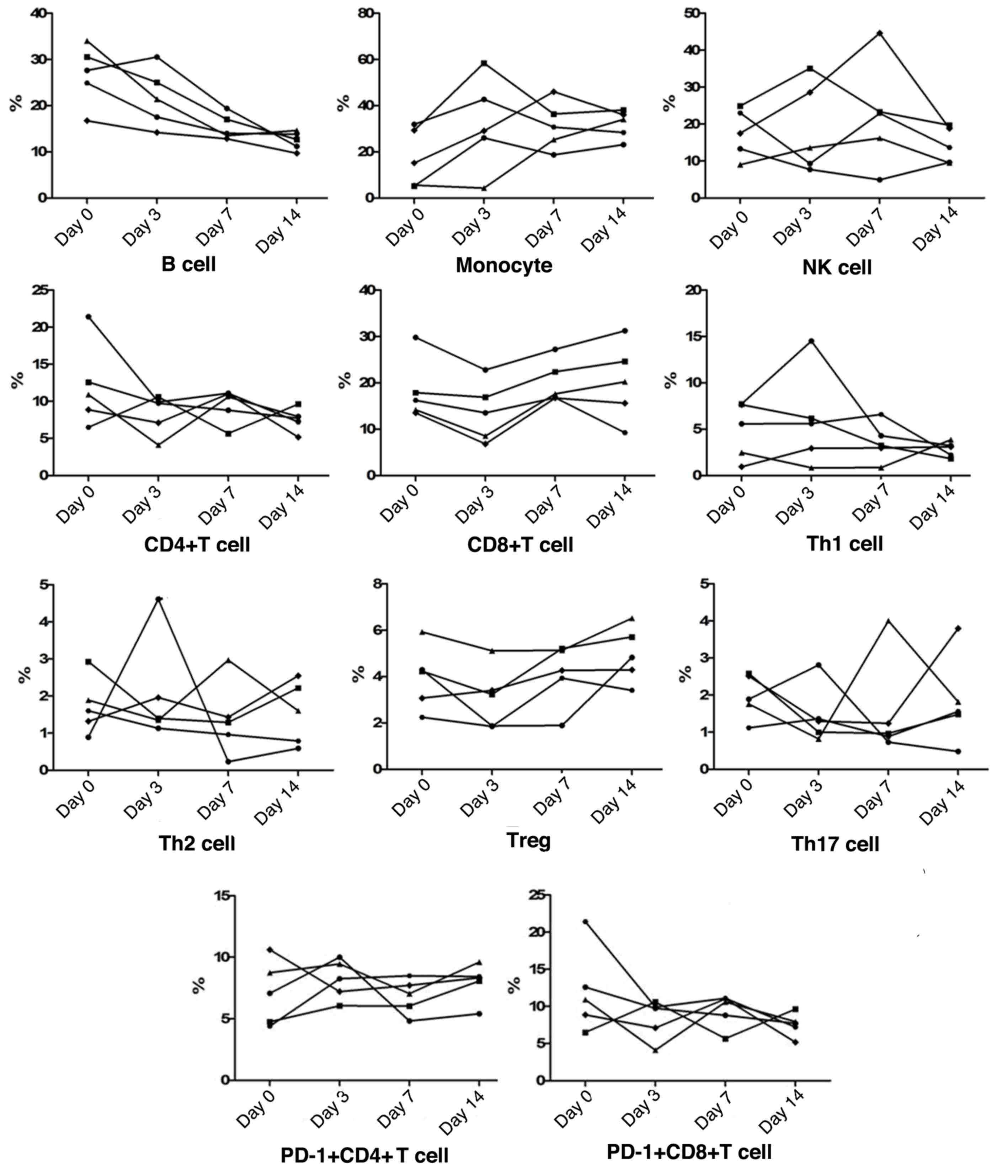|
1
|
Wang XF, Shi GC, Wan HY, Hang SG, Chen H,
Chen W, Qu HP, Han BH and Zhou M: Clinical features of three avian
influenza H7N9 virus-infected patients in Shanghai. Clin Respir J.
8:410–416. 2014. View Article : Google Scholar : PubMed/NCBI
|
|
2
|
Gao HN, Lu HZ, Cao B, Du B, Shang H, Gan
JH, Lu SH, Yang YD, Fang Q, Shen YZ, et al: Clinical findings in
111 cases of influenza A (H7N9) virus infection. N Engl J Med.
368:2277–2285. 2013. View Article : Google Scholar : PubMed/NCBI
|
|
3
|
Koyama S, Ishii KJ, Coban C and Akira S:
Innate immune response to viral infection. Cytokine. 43:336–341.
2008. View Article : Google Scholar : PubMed/NCBI
|
|
4
|
Heltzer ML, Coffin SE, Maurer K, Bagashev
A, Zhang Z, Orange JS and Sullivan KE: Immune dysregulation in
severe influenza. J Leukoc Biol. 85:1036–1043. 2009. View Article : Google Scholar : PubMed/NCBI
|
|
5
|
Mao H, Tu W, Qin G, Law HK, Sia SF, Chan
PL, Liu Y, Lam KT, Zheng J, Peiris M and Lau YL: Influenza virus
directly infects human natural killer cells and induces cell
apoptosis. Virol. 83:9215–9222. 2009. View Article : Google Scholar
|
|
6
|
Giamarellos-Bourboulis EJ, Raftogiannis M,
Antonopoulou A, Baziaka F, Koutoukas P, Savva A, Kanni T, Georgitsi
M, Pistiki A, Tsaganos T, et al: Effect of the novel influenza A
(H1N1) virus in the human immune system. PLoS One. 4:e83932009.
View Article : Google Scholar : PubMed/NCBI
|
|
7
|
Tse GM, To KF, Chan PK, Lo AW, Ng KC, Wu
A, Lee N, Wong HC, Mak SM, et al: Pulmonary pathological features
in coronavirus associated severe acute respiratory syndrome (SARS).
J Clin Pathol. 57:260–265. 2004. View Article : Google Scholar : PubMed/NCBI
|
|
8
|
Wang CH, Liu CY, Wan YL, Chou CL, Huang
KH, Lin HC, Lin SM, Lin TY, Chung KF and Kuo HP: Persistence of
lung inflammation and lung cytokines with high-resolution CT
abnormalities during recovery from SARS. Respir Res. 6:422005.
View Article : Google Scholar : PubMed/NCBI
|
|
9
|
Lange E, Kalthoff D, Blohm U, Teifke JP,
Breithaupt A, Maresch C, Starick E, Fereidouni S, Hoffmann B,
Mettenleiter TC, et al: Pathogenesis and transmission of the novel
swine-origin influenza virus A/H1N1 after experimental infection of
pigs. J Gen Virol. 90:2119–2123. 2009. View Article : Google Scholar : PubMed/NCBI
|
|
10
|
Guo X, Chen Y, Li X, Kong H, Yang S, Ye B,
Cui D, Wu W and Li L: Dynamic variations in the peripheral blood
lymphocyte subgroups of patients with 2009 pandemic H1N1
swine-origin influenza A virus infection. Virol J. 8:2152011.
View Article : Google Scholar : PubMed/NCBI
|
|
11
|
Joedicke JJ, Dietze KK, Zelinskyy G and
Dittmer U: The phenotype and activation status of regulatory T
cells during Friend retrovirus infection. Virol Sin. 29:48–60.
2014. View Article : Google Scholar : PubMed/NCBI
|
|
12
|
Tan HL and Rosenthal M: IL-17 in lung
disease: Friend or foe? Thorax. 68:788–790. 2013. View Article : Google Scholar : PubMed/NCBI
|
|
13
|
Cao B, Li XW, Mao Y, Wang J, Lu HZ, Chen
YS, Liang ZA, Liang L, Zhang SJ, Zhang B, et al: Clinical features
of the initial cases of 2009 pandemic influenza A (H1N1) virus
infection in China. N Engl J Med. 361:2507–2517. 2009. View Article : Google Scholar : PubMed/NCBI
|
















